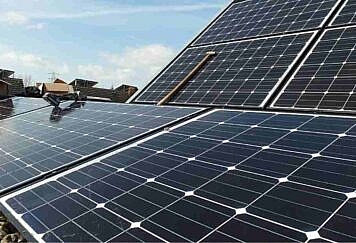With no specialized energy management specialist or commercial energy management system in place, energy management can be one of the most difficult areas to cut facility expenses, particularly for bigger facilities like universities, hospitals, and industries. When it comes to the production and/or transfer of electricity, a set of computer-aided tools known as an EMS (energy management system) is essential to the administrators of electric utility systems. An energy management system is a method of managing and keeping tabs on all of your building’s energy-using components, such as air conditioning, heating, ventilation, and lighting.
While fully effective commercial energy management systems need an initial investment, they will pay for themselves over time via lower utility costs, reduced expenditure, and a higher ROI. The top four advantages of installing an EMS in your business are explained in detail below:
-
Power Source Regulation
The majority of shareholders and property managers can evaluate the WAGES (Water, Air, Gas, Electricity, and Steam) use of the whole site in a straightforward and user-friendly style with the help of an energy management system. Commercial energy management systems enable property and property managers to make better-informed choices regarding energy use by putting all the facts together on one platform.
By identifying and, in certain circumstances, eliminating excessive energy use, as well as scheduling high-impact activities for off-peak hours, this strategy has the potential to significantly cut down on energy expenses. This conserves natural resources and helps the bottom line by decreasing energy needs.
-
Making Decisions Based on Accurate Data
Even if a building’s layout is modified over time, an effective energy management system can monitor the impact on energy use. A rise in ambient temperature near a temperature controller can be caused, for instance, by the placement of electrical equipment in direct range of the sensor; in this case, the sensor would indicate the need for more cooling air. Employees in the zone will likely crank up the heat to combat the chill as the temperature drops.
The relocation of electrical appliances might result in a significant rise in energy consumption. The opposite is also true. If equipment is placed more strategically and cooling and heating needs are cut in half, energy savings will double.
-
Identifying Issues with Power Quality
Power quality issues are also detected, so property owners and building managers are informed, which is another advantage of an energy management solution and fleet control system. The energy management system gets and sends alarms for different problems. This gives building managers the information they need to keep an eye on the situation and act quickly if they need to.
The building management can determine the severity of the problem and take appropriate measures. For example, if the power factor is just slightly low, it is acceptable to leave it as is because the adjustment mechanism will take care of it automatically. Voltage drops or an increase in harmonics are two more potential warning indicators. If these problems keep happening, it may be a sign of a more serious issue with the machinery, and steps may be taken to locate and fix it. If it is not measurable, it cannot be managed.
-
Remote Access
Because the EMS logs all of its data onto a web interface, managers of office buildings can check in on it from wherever they happen to be using any number of portable electronic devices. This is especially useful for maintaining command over campuses with several buildings or big, complicated structures, as building managers can be kept up to date on system modifications regardless of where they are located.
Gaining access to the EMS remotely is crucial, enabling building operators to tailor the system’s administration to their own needs and work styles. If the operators can’t easily access the system, it could go unnoticed as a quiet controller. As a result of the convenience of remote access, users are more likely to log in and use the system, leading to improved efficiency and more money saved.
To Conclude
An energy management system can be installed at a minimal cost. These energy-saving technologies can be customized to your specific needs. It’s a win-win situation whether you’re trying to reduce operating costs or lessen your impact on climate change.
Follow TechStrange for more Technology, Business, and Digital Marketing News.





